
 Declan Schroeder
The Hockey Writers
Declan Schroeder
The Hockey Writers
34
Reads
0
Comments
Jets Can Still Flourish with a Flat Cap
Any chance of the NHL salary cap increasing substantially for the 2020-21 season is dead.
The COVID-19 pandemic, which forced the league to pause the 2019-20 season in March, has done a number on its pocketbook. Just a couple weeks before everything ground to a halt, the NHL got general managers around the league salivating by announcing the cap would raise to between $84 and $88.2 million dollars for the 2020-21 season.
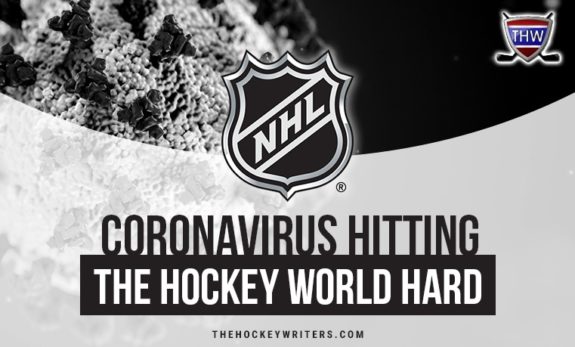
Obviously, with the massive losses due to no broadcasts, no advertising revenue, and no ticket sales — and the uncertainty surrounding when it’ll be safe for fans to attend games again —that rise won’t happen. The modified CBA shows the cap will stay flat at $81.5 million for the next two seasons.
The NHL’s 24-team play-in playoff format — slated to begin Aug. 1 — will help them avoid losses reaching $1 billion, but the deficit will still be deep.
Jets in Better Position Than An Offseason Ago
Despite a flat cap, the Jets are still well-positioned to flourish when Free Agent Frenzy does finally come sometime in October.
In 2019-20, Jets’ GM Kevin Cheveldayoff had more good players than he could afford to pay. His team was right at the cap ceiling and had just experienced a disappointing first-round playoff exit. A mass exodus ensued, with Ben Chiarot, Jacob Trouba, Tyler Myers, and Brandon Tanev all heading off to greener pastures.
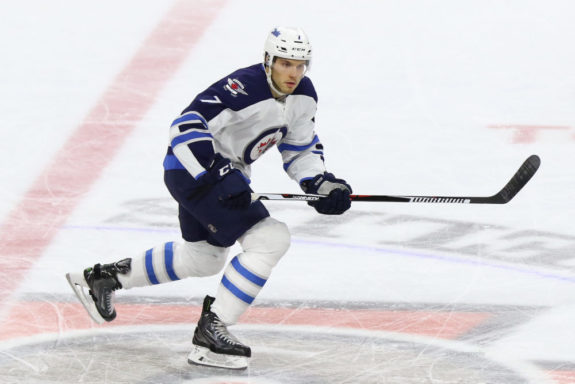
(Amy Irvin / The Hockey Writers) 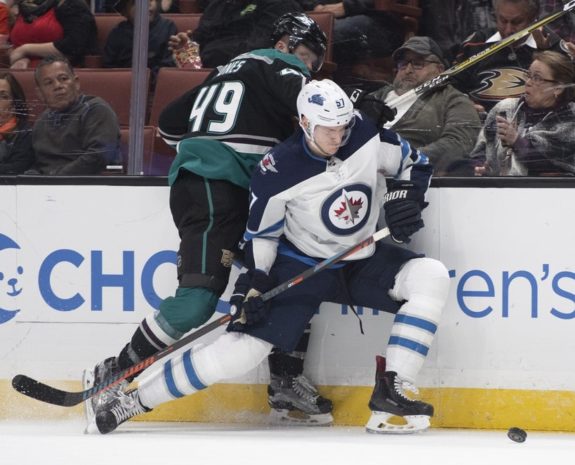
(AP Photo/Kyusung Gong) 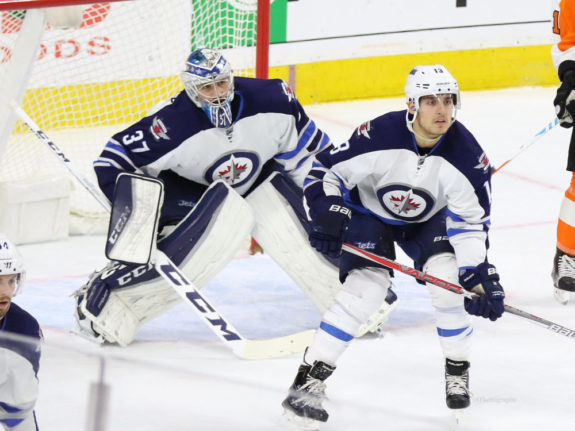
(Amy Irvin / The Hockey Writers) 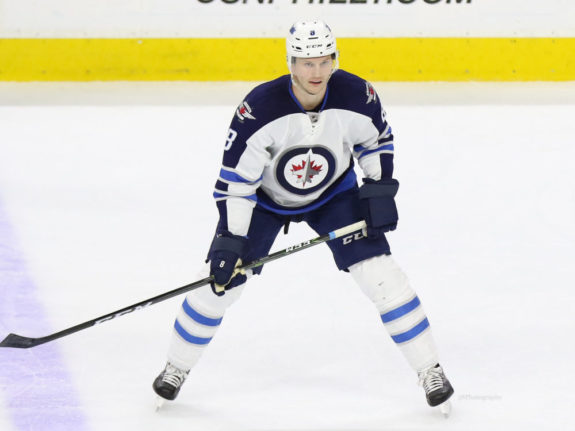
(Amy Irvin / The Hockey Writers)
That was just the beginning of a very trying offseason for Cheveldayoff. He couldn’t afford any appropriate replacements as he needed all the funds at his disposal to pay RFA stars Kyle Connor and Patrik Laine, who both held out all summer long (both young guns ended up inking just before the season began, Connor a massive seven-year contract and Laine a more modest prove-yourself two-year bridge deal.)
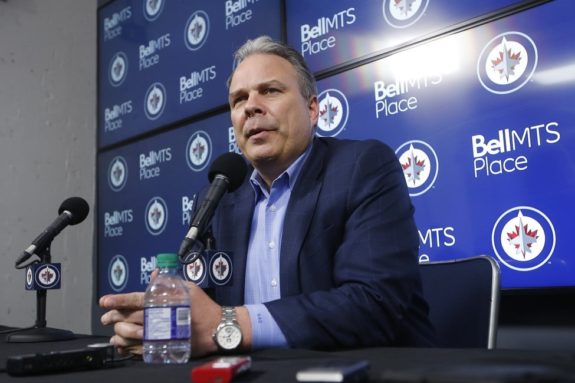
Questionable contracts issued to Dmitry Kulikov, Bryan Little and Mathieu Perreault were also factors in Cheveldayoff’s inability to ink a veteran defenseman; Dustin Byfuglien’s sudden September decision to not report to training camp and instead sit around tying up $8 million — which he’d have to be paid if he decided to come back — compounded matters even further. Cheveldayoff was unable to do anything other than pick up scraps from the waiver wire throughout the season.
Jets Can Still Get Their To-Do List Done
After an exceedingly strange and excruciating season-long saga, the Jets finally got the rogue d-man is their books, reaching an agreement in April to terminate the 35-year-old’s contract. It sees “Big Buff” simply walk away from the last two years and $14 million left on his deal.
The Jets will also be shedding Kulikov’s albatross of a $4.3 million annual cap hit.
Shedding those two contracts alone gives Cheveldayoff more than $10 million with which to work. That’s be in addition to the $3.7 million he’s under the cap right now.
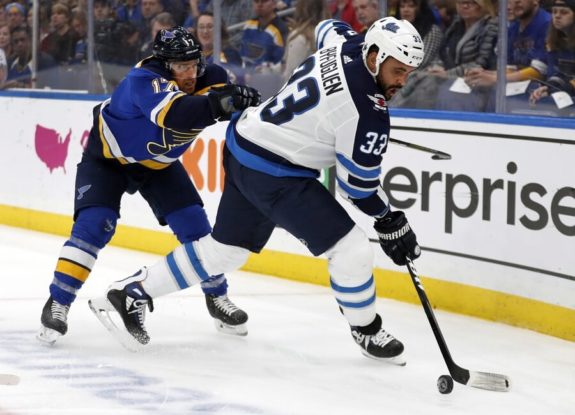
(THE CANADIAN PRESS/AP/Jeff Roberson) 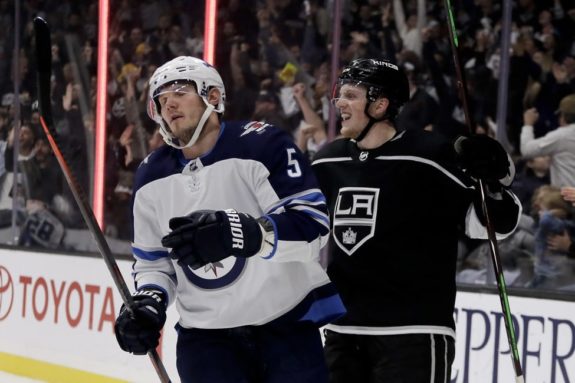
(AP Photo/Chris Carlson)
Cheveldayoff smartly skipped the February Trade Deadline, instead making a couple of deft, affordable deals shortly beforehand for Dylan DeMelo and Cody Eakin. By doing so, he gave his scrappy, resilient squad the immediate help they needed stay in a Western Conference Wild Card spot while avoiding playing jacked-up prices set by sellers looking to take advantage of teams with Cup dreams.
Related: Jets and Cheveldayoff Should Skip the Trade Deadline
By not trading his biggest asset — his first-round pick — Cheveldayoff indicated he was saving his big moves for the offseason.
Priority One: Bolster the Blue-Line, Big Time
The first thing Cheveldayoff needs to do is ink a top-four blueliner to a long-term deal so the Jets don’t need to trot out a rotating cast of fringe players who need Connor Hellebuyck to atone for their defensive sins.
There is a huge crop of quality UFAs to spend the money on, 15 of which we explored back in early March.
Related: Jets Have Dozens of Defensive Options This Offseason
Some of the most viable candidates are Travis Hamonic of the Calgary Flames — a Winnipegger who’s been on the Jets’ radar for half a decade — big-bodied bruiser Brendan Dillon of the San Jose Sharks, and Joel Edmunson of the Carolina Hurricanes, among many others.
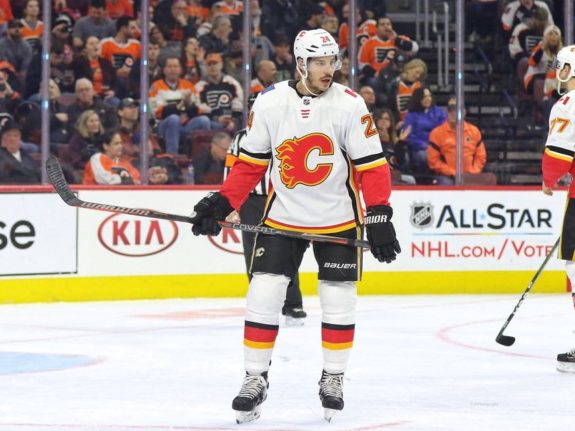
Even after adding a UFA d-man, the Jets should be able to afford to re-sign DeMelo, who was excellent in his 10 games after being acquired from the Ottawa Senators.
DeMelo is on record as being open to returning to the Jets and is an analytics lover’s dream. While the 26-year-old will command a raise over the $1.8 million he’s making, there’s no reason to believe he wouldn’t be a fairly straightforward re-sign. He should definitely be in the Jets’ top four during their five-game play-in series versus the Flames (and beyond, if the Jets come out on top.)
Priority Two: Re-Up Affordable RFAs
The Jets will be able to make defense their priority and still re-sign their in-house restricted free agents — Mason Appleton, Jansen Harkins, Sami Niku, and Jack Roslovic — as none will demand big bucks.
Appleton and Harkins are definitely a big part of the future, with the hard-working Harkins being one of the best positive surprises of the season, but neither are in the position to cash in on long-term deals. Neither is defenseman Sami Niku, who had a trying season with a number of injuries but still offers plenty of upside due to his mobility and prowess with the puck.
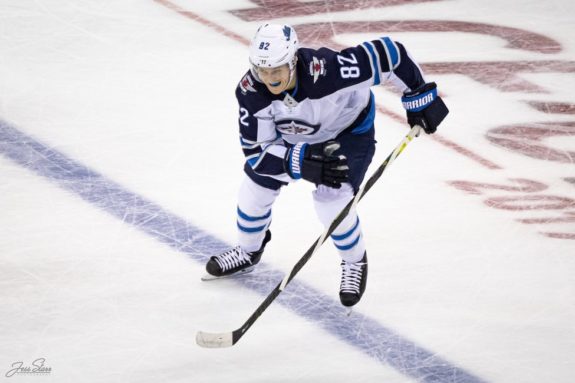
(Jess Starr/The Hockey Writers) 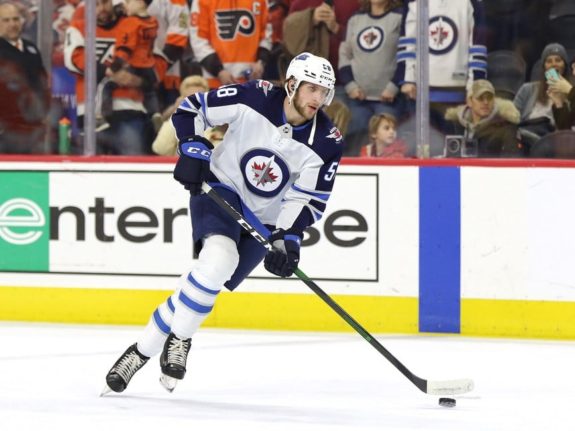
(Amy Irvin / The Hockey Writers) 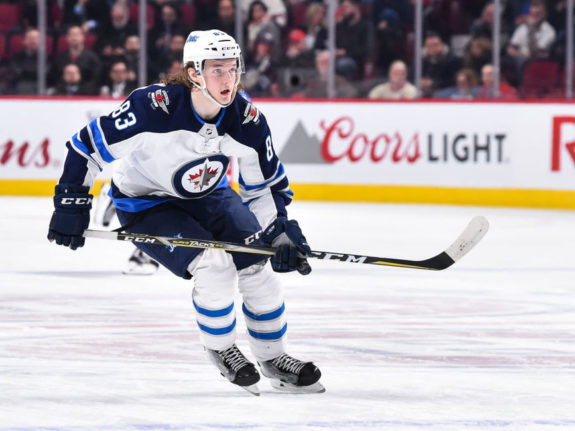
(Photo by Minas Panagiotakis/Getty Images)
The most expensive player to re-sign will be Jack Roslovic. The 2015 first-rounder bounced between the top- and bottom-six but still produced a career-high 12 goals and 17 assists for 29 points. A modest bridge deal is likely best for the forward still figuring out his role.
Priority Three: Clean Up Loose Ends
After priorities one and two are complete, the Jets can look into whether they want to re-sign goaltender Laurent Brossoit (the smart money says they will) and Cody Eakin, who put up a goal and four assists in eight games for the Jets. Other UFAs to decide on include Gabriel Bourque, Mark Letestu, Logan Shaw, and Nick Shore.
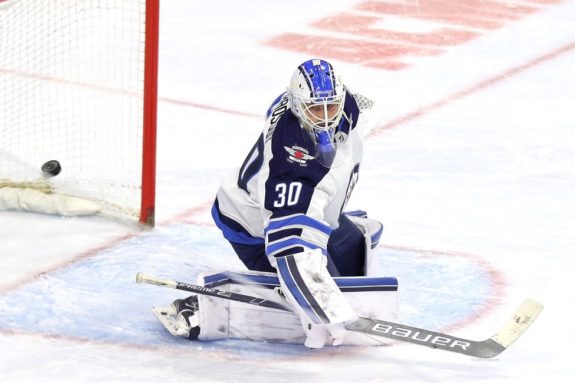
To free up more funds, they could look into buying out Bryan Little — who still has four more years remaining on a seven-year contract which carries an $5.29 million AAV but hasn’t played since suffering a serious head and ear injury last November.
Jets Need to Get it Right
While the focus the next little while will be dedicated to making sure players stay healthy during Phase 3 — the training camp phase of the NHL’s Return-to-Play protocol which starts July 13 — and making a run when games do get underway under Phase 4, Cheveldayoff and the Jets still have three extra months to figure out exactly what they want to do.
Related: Jets’ 30 Skater Training Camp: 3 More Moose Who Could Make the Roster
If they don’t get it right this fall, they will have absolutely no excuse.
The post Jets Can Still Flourish with a Flat Cap appeared first on The Hockey Writers.
Popular Articles

















































 Canucks Vancouver
Canucks Vancouver Sharks San Jose
Sharks San Jose Flames Calgary
Flames Calgary Avalanche Colorado
Avalanche Colorado Coyotes Arizona
Coyotes Arizona Golden Knights Vegas
Golden Knights Vegas Wild Minnesota
Wild Minnesota Red Wings Detroit
Red Wings Detroit Blues St. Louis
Blues St. Louis Blackhawks Chicago
Blackhawks Chicago Blue Jackets Columbus
Blue Jackets Columbus Hurricanes Carolina
Hurricanes Carolina Jets Winnipeg
Jets Winnipeg Predators Nashville
Predators Nashville Ducks Anaheim
Ducks Anaheim Oilers Edmonton
Oilers Edmonton Sabres Buffalo
Sabres Buffalo Rangers New York
Rangers New York Bruins Boston
Bruins Boston Panthers Florida
Panthers Florida Senators Ottawa
Senators Ottawa Lightning Tampa Bay
Lightning Tampa Bay Capitals Washington
Capitals Washington Islanders New York
Islanders New York Devils New Jersey
Devils New Jersey Maple Leafs Toronto
Maple Leafs Toronto Flyers Philadelphia
Flyers Philadelphia Penguins Pittsburgh
Penguins Pittsburgh Stars Dallas
Stars Dallas Kraken Seattle
Kraken Seattle Kings Los Angeles
Kings Los Angeles






